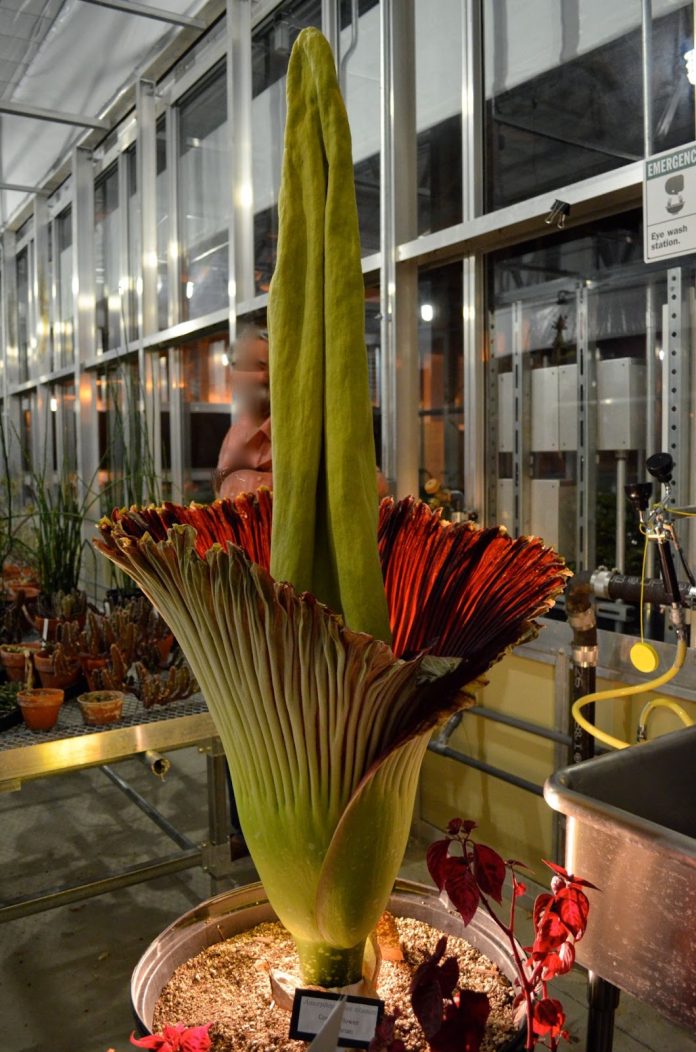Sarah Fishman
Staff Writer
UC Santa Barbara’s (UCSB) Biology Greenhouse serves not only the school, but also the local ecosystem and community. Cameron Hannah-Bick, manager of the greenhouse, oversees both its research and teaching collections.
The research collection grows plants to help researchers with their work. At the moment, the collection has around 18 different research projects. Hannah-Bick told The Bottom Line (TBL) the projects “[range] from examining the genes that influence flower spur lengths to restoration techniques of native plants.” Maintaining these plants is a hefty task that requires pesticides, fertilizers, and pruning, but Hannah-Bick’s work with the researchers is rewarding: “Everyone’s really awesome,” she shared. Most researchers come from UCSB’s Ecology, Evolution, and Marine Biology department, but others are from the Bren School of Environmental Science & Management, the Department of Molecular, Cellular, & Developmental Biology, and more.
The exotic teaching collection in the greenhouse is full of plants from around the world and works with UCSB departments like art and anthropology. This summer, they will offer a course on botanical illustration with professor Eric Beltz from the Art Department. The students will study plant morphology and learn how to correctly draw these organisms. The main goals of the teaching collection are to provide plants for classroom use as well as preserve endangered and threatened species.
Conversion is very important to Hannah-Bick. She said, “I have a soft spot for any kind of plant that is not doing so well.” She is a part of multiple conservation networks and greenhouse curator networks, which aim to prevent species from going extinct through methods such as trading seeds, sending them out to universities, and more.
The greenhouse also helps to promote California native plant restoration. Hannah-Bick explained the amount of ongoing studies focused on figuring out how to control non-native invasive grasses, and promote the health of native ecosystems. It’s about “how we can best take care of the California we’ve got,” she said.
One greenhouse achievement Hannah-Bick takes pride in is the bloom of a corpse flower, or Titan arum, in 2013. According to Hannah-Bick, around 3,000 people came to UCSB to view the rare occurrence; at the time, the endangered flower had bloomed in captivity less than 200 times on Earth. The flower, a 6-foot-tall unbranched inflorescence (cluster of flowers), is blood red and smells like a rotten corpse — from which it gets its name.
The greenhouse also started an annual donation-based plant sale, which Hannah-Bick describes as a special way to “connect to students who are interested in learning how to grow plants, but maybe don’t feel like they have the greenest of thumbs.” The sale features plants that can be grown in apartments, don’t require much sun, and come with fertilizer in the soil — the goal being to make them easy to care for. The sale is donation-based (which means it doesn’t require payment), and the greenhouse was able to donate the extra plants to the food bank.
Danae Stathatos, an undergraduate assistant at the greenhouse, described her work as “free therapy.” She comes in once a week to water and check on all the plants in both the bays and outside, which takes her around three to four hours. She also helps Hannah-Bick with other tasks such as repotting plants and taking measurements for experiments.
Stathatos enjoys connecting with labs and meeting people through the job: “Cool kids come to the greenhouse, and you can quote me on that.” Her interest in caring for plants started when she received a bonsai tree, or Ficus microcarpa, as a birthday gift a few years back. Similarly, “one of the first plants [Hannah-Bick] ever got obsessed with” are Haworthias: a genus of plants in the Aloe family. She especially likes the translucent “stained-glass window” leaves.
Fostering a love of nature is a big part of life at the greenhouse, which became obvious when Hannah-Bick gave me my very own Haworthia plant at the end of our interview.











